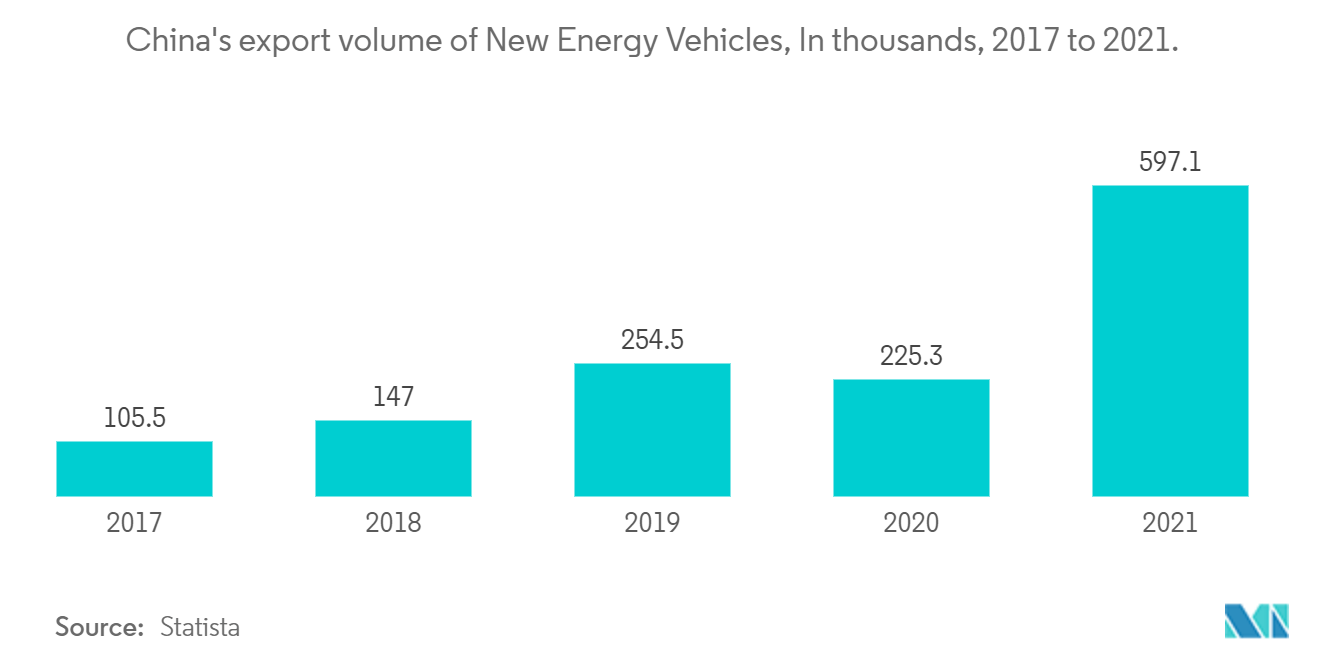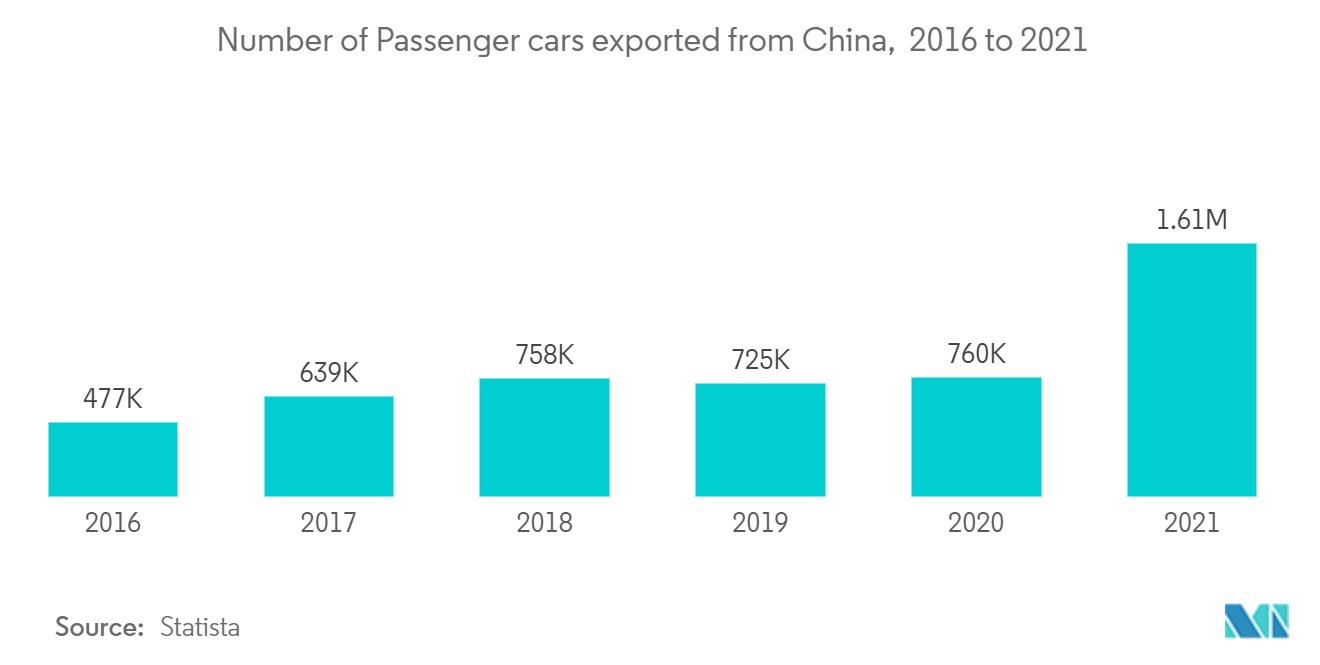Market Trends of China Automotive Logistics Industry
This section covers the major market trends shaping the China Automotive Logistics Market according to our research experts:
Chinese Investment in NEVs (New ENergy Vehicles)
In 2021, China exported a total of about 597,100 new energy vehicles, a significant increase of nearly 1.7 times compared to the previous year 2020. In year 2020, about 3.5 million new energy vehicles were sold inside of China.
China's new energy vehicle manufacturing industry has made remarkable progress since 2013. In 2022, China is projected to produce over 13 million electric vehicles, exceeding all other major manufacturers' combined production volume, as per statista. Meanwhile, Chinese carmakers are seen as frontrunners in electric car sales as well. Chinese automotive company BYD and the SAIC-GM-Wuling joint venture, ranked second and third in terms of plug-in electric vehicle sales globally, next to market leader Tesla.
China is investing in NEVs and growth in China and the APAC region offers good opportunities for the shipping and logistics companies. The company transports batteries from China to Europe for leading OEMs and suppliers and provides electric-specific compound services in different markets. Additionally, GEFCO and its JV partners have worked with Chinese EV brands, such as BYD. China is aiming to become the world’s leading exporter of vehicles, it already leads in the NEV market and its dominance of the major material mining sources in the world will help support this vision.
Due to the saturated market and high access standards, Chinese automotive enterprises contributed only about six percent of all imported vehicles to the EU in 2020. However, in the year 2021, share of Chinese car exports to Europe jumped to 24 percent of total exports, making Europe the second trading partner after Asia. This was due to the strengthened regulations on CO2 emissions from passenger cars and incentives boosting demand for new energy vehicles in Europe and providing an excellent opportunity for Chinese automakers to win more market share.

Increasing vehicle exports from China
In 2021, China exported around 402,000 commercial vehicles and 1.6 million passenger vehicles, as per statista. This represented a 111 percent increase in exports of passenger cars and a 71 percent increase in exports of commercial vehicles compared to the previous year 2020. Since 2017, China has been the world’s largest car producing country. Nearly 30 percent of the global passenger car production was manufactured in China in 2020, exceeding the overall share of the European Union. First and foremost, car production in China is set to satisfy domestic car demand as only about 7.5 percent of passenger cars manufactured in China were destined for export markets in 2021.
In other national car markets, Chinese car brands enjoy a significant cost advantage over imported cars from international automobile manufacturers. Thus, other developing countries and emerging markets were the main export destinations for Chinese vehicle exports as of 2021. Although exports of Chinese car brands have increased rapidly over the past decade, it is still a long way for China to become a car export powerhouse. Vehicles made in China have not posed a threat to Japanese or European auto makers internationally since Chinese exports are more concentrated in low-end market segments. In 2021, China exported 191,249 vehicles to Chile, making it China's largest export vehicle trading partner. This was followed by Saudi Arabia, to which China exported 132,997 vehicles in that year.
Nevertheless, the automotive export industry in China still has great potential. Driven by the export of new energy cars, China opened up a more extensive market in developed countries. In the first three quarters of 2020, Europe overtook South America to become the second-largest overseas market of China’s automotive export. On the other hand, China grew to be one of the top exporters of vehicle parts.

